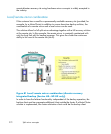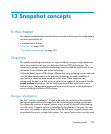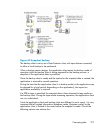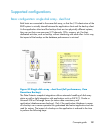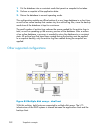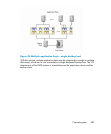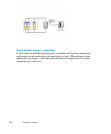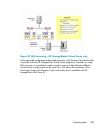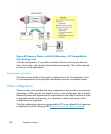not written to that reserved space until necessary. As the data changes on the source
volume, the snapshot data on the target volume is updated with the original data.
Since this snapshot technique caches only the difference between the ever-changing
original data content against the point-in-time state, copy-on-write snapshots with the
preallocation of disk space are depended on their source volumes; if the data on
source volumes is lost, the associated snapshots are useless.
Snapshots without the preallocation of disk space
Copy-on-write snapshots without the preallocation of disk space also represents a
point-in-time copy of the original data but it does not require preallocation of disk
capacity. The disk capacity is allocated dynamically on as-needed basis. As the data
on source volume changes, free space in a disk array is used for the creation of the
snapshot. Copy-on-write snapshots without the preallocation of disk space are intended
to be short-lived snapshots. Note that their size grows dynamically and may eventually
run out of storage capacity if they are not deleted regularly.
The main benefit of copy-on-write snapshots without the preallocation of disk space
over copy-on-write snapshots with the preallocation of disk space is in significant
reduction of costs. Considerably less additional storage capacity for replication space
is needed, if the snapshots are deleted regularly, than with a standard snapshot
technology.
Since this snapshot technique caches only the difference between the ever-changing
original data content against the point-in-time state, copy-on-write snapshots without
the preallocation of disk space are depended on their source volumes; if the data
on source volumes is lost, the associated snapshots are useless.
Snapclones
The first part of the snapclone creation is similar to the creation of a copy-on-write
snapshot with the preallocation of disk space, which is followed by the cloning
process. During this process, all data from the source volume is copied to the target
volume. A snapclone enables immediate access to the replicated data while the
cloning process runs in the background using the disk array idle time. When the
cloning process is finished, the snapclone becomes a full data copy that represents
a point-in-time state of the source volume; if the data on source volume is lost, you
can always revert to the snapclone.
Snapshot concepts280



